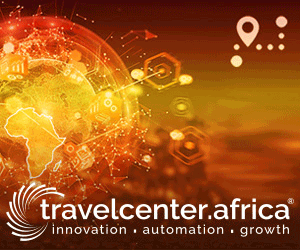 Tourism in East Africa - Unpicked ripe fruit
Tourism in East Africa - Unpicked ripe fruit
If there is one thing that East Africa is widely known for, it is definitely its exotic nature scape extending from rivers to lakes, and across the East African Rift Valley. It is with no doubt tourism is one of Tanzania's - indeed East Africa's - major forex earners and contributors to the economy.
Tourism is also one of the major employers in East Africa, holding nearly 7 per cent of employment in the region according to information from the East African Community making up of Tanzania, Kenya, Uganda, Rwanda, Burundi and South Sudan.
Arguably, East Africa has some of the most iconic and the world celebrated attractions. From the dense forests in Volcanoes National Park to the magic and outstanding work of nature in the Ngorongoro Conservation area in Tanzania, the region is endowed with scenic and exotic wonders of nature--wildlife as well as waterfalls, lakes and mountains.
All these areas accumulate billions of shillings in tourism revenue that are fueled back to the respective economies. Unquestionably, the tourism industry has taken a hit due to the coronavirus pandemic across the region. As data from the United Nations World Tourism Organization pointed out earlier this year, tourist arrivals were down by 87 per cent -- an indication of how the virus has held hostage one of the most vital veins of the region's economy. With these challenges the industry has comprehended the underlying potential for its maximum growth and is moving in the right direction to synergize efforts to bolster the industry.
For instance, according to the International Growth Center (IGC) 2017 publication, there are much more things to improve in the Rwandan and Ugandan tourism industries, within the categories of actors, consumers, distribution intermediaries and service providers--as well as three separate value chains, leisure and business.
It is with no doubt the direct service providers offer the largest opportunity for employment in each chain, such as in Tanzania the sector offers more than 600,000 direct and indirect jobs, but the IGC argues that "it is the distribution intermediaries--global tour operators, travel management companies (TMCs), destination management companies (DMCs), convention bureaus, professional conference organizers (PCOs), and so on--that mostly control the sector's upgrading potential, by facilitating links with end markets.
The EAC pins the tourism sector as a crucial operation for the economy, arguing that it contributed an average of 17 per cent to export earnings and its contribution to GDP is significant standing at around 10 per cent. East Africa has the ability to remain the most vibrant hotspot for tourism in Africa particularly with the EAC spirit of unity propagated by member states it is up to the individual countries to levitate their tourism potential collectively.
Efforts weighed by East Africa towards tourism
In Tanzania, several efforts have been put in place to bring more visitors to the country's vibrant attractions. This includes developing a more appealing and modernized branding, "unforgettable Tanzania", improving travel means--which has been translated through the establishment of different travel routes by the national flight carrier, Air Tanzania, to India, China, Nigeria, and Comoros.
Further, Tanzania is forging partnerships with the UAE via the Emirates flight flag, which is widely known for its superb air travel service. Also, through sports tourism, Tanzania is hosting the world's highest obstacle course race at the summit of Africa's highest mountain--Mount Kilimanjaro.
Another major player in the tourism sector in East Africa, Rwanda, an upcoming ICT hub of East Africa, has concentrated efforts on conference tourism through 'meetings, incentives, conferences and exhibitions (MICE) events.
According to IGC, the government of Rwanda has made an emphasis on conference tourism, using a contract with the World Bank to "the Business Tourism Company as a consultant to provide strategic oversight and help create the Rwanda Convention Bureau (RCB). The RCB has doubled the number of association meetings in Rwanda in two years and is attempting to increase delegate spending from $245 per day to closer to the global average of between $600-650.
Rwanda has gone a step further and promoted its tourism attractions on the world stage, through sports via its 'Visit Rwanda' tagline on England's Premium League football clubs.
The EAC core objectives compel the countries to bring collective efforts to promote their industry and share benefits as they come. So far, the EAC treaty (under Article 115) has shown partner states can undertake and develop collective and coordinated approaches to the promotion and marketing of quality tourism into and within the community (EAC).
Hence, the entire concept of coordinating policies in the tourism industry to establish a framework of cooperation is vital, as it will promote the equitable manner of benefit-sharing.
As Tanzania, Kenya and Uganda share a certain portion of tourist attractions, particularly Mount Kilimanjaro, Lake Victoria (Uganda), there is a need to develop a "common code of conduct for a private and public tour and travel operators, standardize hotel classifications and harmonize the professional standards of agents", according to the EAC.
Despite hiccups facing the region's tourism industry such as poaching and wildlife habitat loss, stiff competition from relatively cheaper attractions, negative travel advisories from notable sources and inadequate and inefficient infrastructure, there is hope for the sector.
Building tourist confidence is primary, particularly in taking health protocol measures and the safety of tourists; investing in the value chain to bring about valuable outputs, funding the development of accommodations to make them more sustainable and environment-friendly, and digitising certain processes.
As the entire world understands the meaning of cooperation and partnership, even the sustainable development goals have clearly stipulated the vitality of partnerships, the East African community stands to draw billions from tourism if it utilizes the region's tourism marketing strategy in a smart way.
